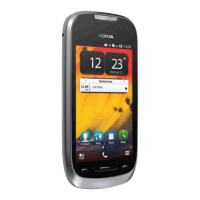How does the FCC Audit Cell Phone RF?
After FCC grants permission for a particular cellular telephone to be marketed, FCC will occasionally conduct “post-grant”
testing to determine whether production versions of the phone are being produced to conform with FCC regulatory
requirements. The manufacturer of a cell phone that does not meet FCC’s regulatory requirements may be required to
remove the cell phone from use and to refund the purchase price or provide a replacement phone, and may be subject to
civil or criminal penalties. In addition, if the cell phone presents a risk of injury to the user, FDA may also take regulatory
action. The most important post-grant test, from a consumer’s perspective, is testing of the RF emissions of the phone.
FCC measures the Specific Absorption Rate (SAR) of the phone, following a very rigorous testing protocol. As is true for
nearly any scientific measurement, there is a possibility that the test measurement may be less than or greater than the
actual RF emitted by the phone. This difference between the RF test measurement and actual RF emission is because test
measurements are limited by instrument accuracy, because test measurement and actual use environments are different,
and other variable factors. This inherent variability is known as “measurement uncertainty.” When FCC conducts post-grant
testing of a cell phone, FCC takes into account any measurement uncertainty to determine whether regulatory action is
appropriate. This approach ensures that when FCC takes regulatory action, it will have a sound, defensible scientific basis.
FDA scientific staff reviewed the methodology used by FCC to measure cell phone RF, and agreed it is an acceptable
approach, given our current understanding of the risks presented by cellular phone RF emissions. RF emissions from cellular
phones have not been shown to present a risk of injury to the user when the measured SAR is less than the safety limits set
by FCC (an SAR of 1.6 w/kg). Even in a case where the maximum measurement uncertainty permitted by current
measurement standards was added to the maximum permissible SAR, the resulting SAR value would be well below any level
known to produce an acute effect. Consequently, FCC’s approach with measurement uncertainty will not result in consumers
being exposed to any known risk from the RF emitted by cellular telephones.
FDA will continue to monitor studies and literature reports concerning acute effects of cell phone RF, and concerning chronic
effects of long-term exposure to cellular telephone RF (that is, the risks from using a cell phone for many years). If new
information leads FDA to believe that a change to FCC’s measurement policy may be appropriate, FDA will contact FCC and
both agencies will work together to develop a mutually-acceptable approach.
Updated July 29, 2003
Message from the CTIA (The Wireless Association)
© 2006 Cellular Telecommunications & Internet Association. All Rights Reserved. 1400 16th Street, NW Suite 600,
Washington, DC 20036. Phone: (202) 785-0081.
Safety is the most important call you will ever make.
A Guide to Safe and Responsible Wireless Phone Use While Driving
Wireless devices give consumers the freedom to stay connected with family and friends, to conduct business and to have
fun virtually anytime, anywhere. But, when it comes to using wireless phones behind the wheel, it’s important to remember
that safety always comes first.
Drivers face many distractions in the car – from eating and drinking to playing music or talking with other passengers. The
wireless industry has worked closely with the public safety community, to help educate drivers on the range of distractions
they face behind the wheel as well as when it is appropriate to place or receive a wireless phone call. Educational efforts
that provide practical and sound advice, rather than legislation, are the best methods to truly affect driver behavior in a
positive way.
Through industry-sponsored public service announcements and outreach, drivers are reminded to, before reaching for the
phone while driving, ask themselves, “Is this call necessary?” If it is necessary to use a wireless phone while driving, the
wireless industry encourages drivers to follow some basic do’s and don’ts to ensure that a wireless phone doesn’t become
a distraction.
Your wireless phone can be your best traveling partner – offering a lifeline in emergencies, helping to locate directions and
keeping you connected with family and friends when necessary. In fact, wireless phones are one of the best safety tools
drivers can have on the road. Every day, more than 200,000 calls are made from wireless phones to 911 or other emergency
Product and safety information 17

